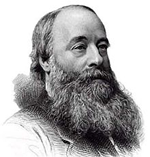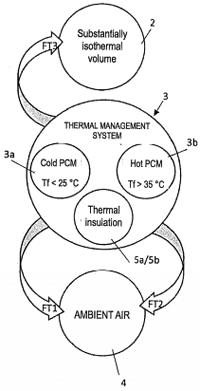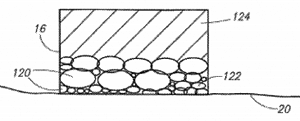 The Phase Change Matters e-mail newsletter is a weekly summary of the latest news and research on phase change materials and thermal energy storage. To subscribe, visit www.puretemp.com/subscribe. For more frequent updates, follow @puretemp on Twitter or visit the Phase Change Matters blog, www.puretemp.com/pcmatters.
The Phase Change Matters e-mail newsletter is a weekly summary of the latest news and research on phase change materials and thermal energy storage. To subscribe, visit www.puretemp.com/subscribe. For more frequent updates, follow @puretemp on Twitter or visit the Phase Change Matters blog, www.puretemp.com/pcmatters.
IN BRIEF
• The U.S. Department of Energy has announced $33 million in research funding to advance technologies that work toward achieving the department’s 2030 cost target of 5 cents per kilowatt-hour for CSP-generated electricity with at least 12 hours of thermal energy storage. “This research,” DOE writes, “includes new materials and technologies that significantly reduce the cost of manufacturing, enable new energy storage technologies, and develop solutions that enable a solar field to operate autonomously without any human input.”
 • Walero racewear, which uses Outlast phase change technology to regulate temperature in race and rally drivers, has been put to the test on reigning British GT4 champion Jack Mitchell in a temperature-controlled race simulator. The tests were directed by racing performance coach Dean Fouache. On the first day, Mitchell, right, wore standard Nomex underwear; on the second day, he wore Walero underwear. Three measurements were recorded every five minutes during the hourlong tests: body temperature, heart rate and weight loss. In all three areas, Walero showed measurable advantages over the Nomex. “Jack sweated around 40 percent less in the Walero underwear and his average heart rate was eight beats less over the course of the hour,” Fouache told Autosport magazine. “So, all in all, relatively conclusive results – even though it is a small comparison test.”
• Walero racewear, which uses Outlast phase change technology to regulate temperature in race and rally drivers, has been put to the test on reigning British GT4 champion Jack Mitchell in a temperature-controlled race simulator. The tests were directed by racing performance coach Dean Fouache. On the first day, Mitchell, right, wore standard Nomex underwear; on the second day, he wore Walero underwear. Three measurements were recorded every five minutes during the hourlong tests: body temperature, heart rate and weight loss. In all three areas, Walero showed measurable advantages over the Nomex. “Jack sweated around 40 percent less in the Walero underwear and his average heart rate was eight beats less over the course of the hour,” Fouache told Autosport magazine. “So, all in all, relatively conclusive results – even though it is a small comparison test.”
• New this month from Central West Publishing in Australia: “Phase Change Materials,” edited by Vikas Mittal, an associate professor of chemical engineering at the Petroleum Institute in Abu Dhabi.
• The International Conference on Innovative Applied Energy in the United Kingdom earlier this month featured a number of experiments with phase change materials, including Auburn University‘s development of micro-encapsulated phase change materials that can be combined with many different media. Other PCM research included a bio-composite made with hemp lime concrete and a novel utilization of fly ash to encapsulate phase change materials.
 • The 200th anniversary of the birth of physicist James Prescott Joule will be commemorated with the unveiling of a plaque in Sale, United Kingdom, in April. The English physicist and mathematician, who gave his name to the unit of energy, was born on Dec. 24, 1818, in Salford. He died in Sale in 1889.
• The 200th anniversary of the birth of physicist James Prescott Joule will be commemorated with the unveiling of a plaque in Sale, United Kingdom, in April. The English physicist and mathematician, who gave his name to the unit of energy, was born on Dec. 24, 1818, in Salford. He died in Sale in 1889.
• The deadline for submitting manuscripts for “Phase Change Materials of Buildings,” a special issue of the journal Buildings, is Sunday, March 31. Dr. Morshed Alam of Australia’s Swinburne University of Technology is the guest editor.
• Correction: Last week’s item on a thermal energy storage system at Swinburne University of Technology in Australia incorrectly described one characteristic of the salt hydrate used in the system. The PCM has a melting temperature of 13-15 °C.
PATENTS
Nanostructured phase change materials for solid state thermal management
U.S. patent application 20190092992 (applicant BioAstra Technologies Inc., Montreal, Canada):
“Nanostructured phase change materials (PCMs) which are heterogeneous materials having at least two phases, at least one of the phases having at least one of its dimensions in the nanoscale, and comprising a first agent that undergoes an endothermic phase transition at a desired temperature and a second agent that assists in maintaining a nanostructure, are provided. There are also provided methods for manufacturing such PCMs, and applications thereof for providing thermoregulatory coatings and articles containing such coatings for use in a wide range of applications, such as cooling textiles, wipes, packaging, films, walls and building materials.”

Insulating thermal barrier having hot and cold PCM
U.S. patent application 20190093960 (applicant Hutchinson SA, Paris, France):
“A thermal barrier for helping maintain a temperature in a volumes and/or at least one internal structural component surrounded by said barrier. The barrier comprises a first component containing at least one phase change material (PCM) that changes its state at a first temperature, a second component containing a PCM that changes its state at a second temperature which is different from the first temperature, and a third, thermally insulating component that is disposed between the first and second components containing a PCM or outside the second component.”
Phase change nanoparticles for li-ion battery safety
U.S. patent application 20190097265 (assignee University of South Florida, Tampa, Fla.):
“Methods and devices for controlling the temperature of a Li-ion battery cell are provided. A method can included combining the electrolyte and electrode components of a Li-ion battery with nanoparticles comprising of a phase change material with a melting point of 80° C. or greater, encapsulating the phase change material in an encapsulating material that has a melting point of 120° C. or greater.”
Ostomy pouching system
U.S. patent application 20190091068 (inventor Alan N. Schwartz, Edmonds, Wash.):
 “An ostomy pouching system is described. A baseplate includes a seal [16] adapted to be securely placed on the skin [20] about the perimeter of tissue defining a stoma incised into a patient. An ostomy reservoir forms a sealed space within which discharge can be received and held. A flex layer includes a seal that is airtight, watertight, or both, and which is structurally interposed between at least a portion of two or more of the skin, tissue, stoma, baseplate, and ostomy reservoir. The flex layer includes a resiliently and elastically malleable phase change material [120]. The flex layer is deformable such that at least one portion of the flex layer can transmute the magnitude of a force applied to the flex layer and redirect the force. External forces acting upon at least one of the skin, tissue, stoma, baseplate, and ostomy reservoir are mitigated, transmuted, and isolated by the flex layer.”
“An ostomy pouching system is described. A baseplate includes a seal [16] adapted to be securely placed on the skin [20] about the perimeter of tissue defining a stoma incised into a patient. An ostomy reservoir forms a sealed space within which discharge can be received and held. A flex layer includes a seal that is airtight, watertight, or both, and which is structurally interposed between at least a portion of two or more of the skin, tissue, stoma, baseplate, and ostomy reservoir. The flex layer includes a resiliently and elastically malleable phase change material [120]. The flex layer is deformable such that at least one portion of the flex layer can transmute the magnitude of a force applied to the flex layer and redirect the force. External forces acting upon at least one of the skin, tissue, stoma, baseplate, and ostomy reservoir are mitigated, transmuted, and isolated by the flex layer.”
RESEARCH ROUNDUP
For our full list of recent academic research, see puretemp.com/academic. Here are highlights from the past week:
From Applied Thermal Engineering:• Thermal characteristics of aluminium hollowed bricks filled with phase change materials: Experimental and numerical analyses
From Energies:
• Assessing the Potentiality of Animal Fat Based-Bio Phase Change Materials (PCM) for Building Applications: An Innovative Multipurpose Thermal Investigation
From Sustainable Energy and Fuels:
• Innovative design of microencapsulated phase change materials for thermal energy storage and versatile applications: A review
From Environmental Research:
• Design and analysis of phase change material based floor heating system for thermal energy storage
From Solar Energy Materials and Solar Cells:
• Direct impregnation and characterization of Colemanite/Ulexite-Mg (OH) 2 paraffin based form-stable phase change composites
• Experimental analysis of solar air collector with PCM-honeycomb combination under the natural convection
From Journal of Molecular Liquids:
• Fabrication and characterization of phase change nanofluid with high thermophysical properties for thermal energy storage
From Renewable Energy:
• Investigation of thermal properties and enhanced energy storage/release performance of silica fume/myristic acid composite doped with carbon nanotubes
From International Journal of Thermal Physics:
• Thermal Property Characterization of a Low Supercooling Degree Binary Mixed Molten Salt for Thermal Energy Storage System
• Thermal reliability and corrosion characteristics of an organic phase change materials for solar space heating applications
• Optimization of a hybrid community district heating system integrated with thermal energy storage system
From Materials & Design:
• Carbon nanotube-Cu foam hybrid reinforcements in composite phase change materials with enhanced thermal conductivity
• Development of Corn-Oil Ester and Water Mixture Phase Change Materials for Food Refrigeration Applications
• Experimental study on the performance of a new encapsulation panel for PCM’s to be used in the PCM-Air heat exchanger
From Case Studies in Thermal Engineering:
• Thermal characteristics on melting/solidification of low temperature PCM balls packed bed with air charging/discharging
From Frontiers in Physiology:
• An evaluation of personal cooling systems for reducing thermal strain whilst working in chemical/biological protective clothing
From Heat and Mass Transfer:
• Experimental investigation of thermal conductivity enhancement of carbon foam saturated with PCM and PCM/MWCNTs composite for energy storage systems
NETWORKING
Connect with PCM experts and industry leaders on LinkedIn
 More than 1,400 people have joined a LinkedIn group devoted to the discussion of phase change material and thermal energy storage. The Phase Change Matters group is an interactive complement to the award-winning blog and newsletter of the same name.
More than 1,400 people have joined a LinkedIn group devoted to the discussion of phase change material and thermal energy storage. The Phase Change Matters group is an interactive complement to the award-winning blog and newsletter of the same name.
You are invited to join the group and connect with PCM and TES experts from around the world. This week we welcome Cheng Yi Lee, HVAC engineer at China Steel Corp., Kaohsiung City, Taiwan; Damilola Akamo, renewable energy and product development consultant, Knoxville, Tenn.; Yannis Archbold, co-founder at Puffin Packaging, Leeds, United Kingdom; and Uli Jakob, managing director at Dr. Jakob Energy Research GmbH & Co. KG, Stuttgart, Germany.